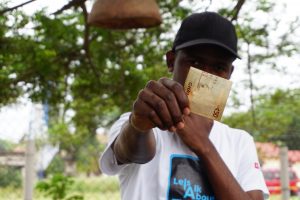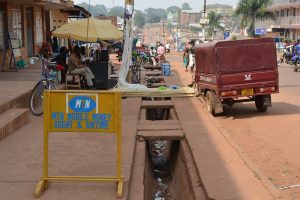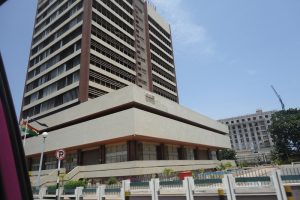A patent is a legal right of protection granted by the government to an inventor for an invention. The invention can be a product, design, or process. For an invention to qualify for a patent, it must be new, must not be obvious, and it must be industrially applicable. A patent right allows inventors to exclude others from making, using, or selling their invention for a certain period of time.
A Patent application can be a National Patent Application (filed in Patent granting Offices in respective countries) or an international application. An international application is filed through international organizations such as the African Regional Intellectual Property Organization (ARIPO) and the World Intellectual Property Organization (WIPO), provided that the country is a member state. WIPO administers the Patent Corporation Treaty (PCT), ensuring a unified method of filing international applications in member states.
It is important to know what is patentable. Non-patentable inventions include therapeutic, mathematical and business methods, diagnostic, and surgical methods for the treatment of animals and humans.
We will take you through how to patent startup products in the following African countries.
How to Patent an Idea in Kenya
The Kenya Industrial Property Institute (KIPI) is responsible for examining and granting patents in Kenya under the Industrial Property Act 2001. Alternatively, inventors can also obtain a patent through the African Regional Intellectual Property Organization (ARIPO), a regional intergovernmental organization based in Harare, Zimbabwe. This body is mandated to grant patents on behalf of its member states.
It is important to know which products and processes are patentable in Kenya before you apply for patent protection.
File the Patent Application with a Patent Office
You will need to download and fill the necessary patent application forms from KIPI’s website. Put in writing the full description of the invention, clearly illustrating the characteristics of the invention. It is also essential to state the scope of patent rights sought. Additionally, the application should contain one or more claims, drawings where necessary, and an abstract.
Formalities Examination
KIPI will then examine the application to ascertain that it meets all requirements under the Industrial Property Act 2001. In the case of any deficiencies in the application, applicants will be asked to make amendments. Upon full compliance, the application is approved, and a patent certificate is issued. Patents in Kenya are valid for a maximum of 20 years. However, the owner is required to pay annuities every year.
Patent application fees vary in different cases. You will need to pay the necessary application fees at the time of filing.
How to Patent an Idea in Tanzania
Through the Registrar of Patents, the Business Registrations and Licensing Agency (BRELA) is responsible for patent registration in Tanzania. You can also patent an invention with the registrar of patents at ARIPO. Patent Registration in Tanzania is done under the Patents Registration Act of 1995, CAP 217, and the Patents Regulation GN. 190 OF 1994, which protects a patent for 10 years from the filing date. However, a patent owner can request an extension for another 5 years. There are two options for patenting an invention in Tanzania:
Patent Application with the Registrar of Patents at BRELA
The application is made by filling form No. 2 accompanied by a patent document (containing the title of the invention and the patent description) in triplicate. However, there are other relevant forms to be filled, depending on the case. Applications should be made in English.
Patent Application with the Registrar at ARIPO
Applicants may be represented by an agent, attorney, or legal practitioner. To make an application at ARIPO, you will need to submit the following documents:
- Full particulars of the applicant
- You will need to provide a specification that includes claims, drawings, and an abstract
- The power of attorney
- If the applicant is not an inventor, he should provide an assignment document
- A certified copy of the priority document if priority is claimed
Fee payments are made to the Registrar of companies, after which a receipt showing payment will be issued.
How to Patent an Idea in Ghana
Patent registration in Ghana is done with the Registrar at the Ghana Patent Registry. The Patents Act, 2003 (Act 657) and the Patents Regulations 1996 (L.I. 1616) make up the regulatory framework for patent protection in Ghana.
Patent Application
Applications are filed with the Registrar and should contain a request for the patent, description, claims, drawings where necessary, and an abstract. The request for the patent should contain a petition to the effect that a patent is granted. Additionally, the request should contain details of the applicant, the inventor, or the agent making the application. In case the applicant is not the inventor, the request must be submitted with a statement justifying the applicant’s right to the patent.
Applicants can divide their applications into two or more divisional applications (this is possible up to the time when the application is in order for grant). However, each application must not go beyond the disclosure in the initial application. Each of these divisional applications is entitled to the filing and priority date of the initial application.
Formalities Examination
A patent application must be made in triplicate. The filing date is the date of receipt of the application if the application, as at the time of receipt, meets all the requirements. If the application does not comply with all requirements, applicants will need to make the necessary corrections.
Upon meeting all requirements, the Registrar grants patent rights, and a publication of the reference of the grant to the patent is made. Certificate issuance then follows. Upon payment of the necessary fees, a copy of the certificate and a record of the patent is made are made available to the public.
How to Patent an Idea in Nigeria
The Trademarks, Patents, and Designs Registry, Commercial Law Department, Federal Ministry of Industry, Trade and Investment is responsible for granting patents in Nigeria under the Patents and Designs Act, 1971. During application to the Registrar of Patents and Designs, applicants (authorized individuals and companies on behalf of inventors) must submit the following documents:
- A request for a patent signed by the applicant or agent. The request should contain the applicant’s full name and address
- A specification that includes claims in duplicate
- Drawings if applicable
- A declaration signed by the true inventor justifying ownership of the invention
- A signed power of attorney if an agent makes the application
- If the applicant’s address is outside Nigeria, an address for service in Nigeria will be needed
A patent applicant can decide to take advantage of a foreign priority for an earlier application made outside Nigeria. In this case, the applicant will need to provide a written declaration that shows the date and number of the earlier application, the country in which the first application was made, and the name of the person who made the application. Additionally, the applicant will provide the Registrar with a certified copy of the earlier application (certified by the Industrial Property Office in that country).
The Registrar will then verify the application. If successful, the Registrar includes the details in the Register of Patents and the same details published and made available to the public. A patent is valid for 20 years from the filing date. The patent holder will need to pay an annual fee starting from the first anniversary of the filing date.
How to Patent an Idea in South Africa
The Companies and Intellectual Property Commission (CIPC) is responsible for patent registrations in South Africa. According to section 25 of the Patent Act, Act 57, you may not patent things such as games, biological inventions, artistic works, business methods, mathematical methods, computer programmes, and methods to treat humans and animals. A patent is valid for 20 years, but it will need to be renewed annually. If you apply through a patent attorney, the application cost will be high. You can apply for a patent manually or electronically.
If you choose to register a patent in South Africa online, you must first register as a customer in the CIPC portal. The following are steps to patent an invention in South Africa.
File a South African Provisional Patent (R60)
A provisional patent reserves your right to file patents in most countries of the world. The application should include the title of the invention, a comprehensive description, claims, drawings where necessary, and an abstract.
File a Complete Patent Application (R590)
It must be signed by a patent attorney and can be submitted manually or electronically. A Complete Patent Application must be submitted within 12 months from the date of filing the provisional patent application. You can also file a complete patent application before filing the provincial patent if the invention is mature.
File an International Patent (PCT patent) If Applicable (R590)
Here, there are two faces; the PCT International Phase application and the PCT National Phase application. This application must be within a year of filing the provisional patent.
Formal Examination of Patent Application
When a complete patent application or PCT national entry has been made, the formal examination is done after 6 months. When the applicant has complied with all requirements, he is then required to advertise the patent in the Patents Journal. A certificate is issued 2 months after publication in the Patent Journal.
How to Patent an Idea in Zambia
The Patents and Companies Registration Agency (PACRA) is responsible for patent registration in Zambia. Patents are governed by the Patents Act Cap 400 of the Laws of Zambia, and they are valid for a period of 16 years. Patent applications are lodged at the Zambia Patent Office in Lusaka where applicants are required to pay the necessary fees. There are two types of patent applications:
- A Convention Application; an application that claims an earlier filing date (priority date) in another country. The filing date in the other country will also be considered as the filing date in Zambia. This application is filed on Patents Form No. 2 and must be accompanied by a complete specification, a priority document, and a deed of assignment where applicable.
- A Non-Convention Application; an application filed when the inventor is still in the process of documenting the invention but would like to protect key elements of the invention. However, the details of the invention (complete specification) must be filed within 12 months of applying. This application is filed on Patents Form No. 1, accompanied by a deed of assignment.
Once the application meets all requirements, a summary of the complete specification is advertised in the Patent and Trademarks Journal for a period of 90 days. If there is no opposition from the public, the patent is granted, and the application for grant is made on Patent Form No. 19. The patent owner must renew the patent from the fourth year of the application and every year thereafter until at the end of 16 years.
Final Thoughts
Patent registration is important as it gives inventors the right to stop others from manufacturing, using, or selling their inventions without permission. Consequently, this encourages people to continue their research and develop new innovations.



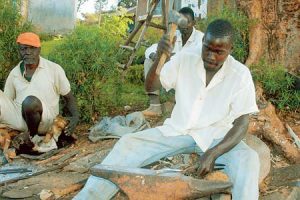












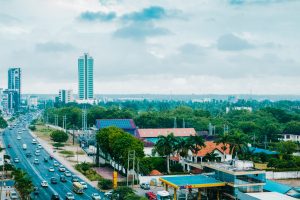








![Starting a Lucrative Hemp Farming Business in Zambia [Interview]](https://businessideas4africa.com/wp-content/uploads/2020/10/pgc9vid8o24-scaled-300x200.jpg)


![How to Grow Hemp for Industrial and Medicinal Use [Beginner’s Guide]](https://businessideas4africa.com/wp-content/uploads/2020/11/vpfehvi5ue4-scaled-300x200.jpg)




